This post compares my experience with GameFound (3 projects), Pledge Manager (4 projects), Backerkit (1 project) and Crowd Ox (2 projects) in several different areas to help you figure out what Pledge Manager would serve you best for your project. I should note that while I kept Crowd Ox in here for posterity, Backerkit purchased them and that service will be dead soonish. If you read my original Tale of 3 Pledge Managers, you may know that I have been very averse to using Backerkit because of their pricing structure (which they did adjust recently). For my most recent project, I absolutely needed VAT/Tax features, which Gamefound did not have implemented at the time. When I calculated the cost of Pledge Manager vs. BackerKit, Backerkit was still more expensive but it was close enough that I figured I would give them a shot. It helps that Backerkit’s pricing favors the higher funded projects too. Worst case scenario, I paid too much to be able to write this blog post for you all, so enjoy it!
TLDR:
Every Pledge Manager I’ve used has had the functionality I’ve needed. While I do my best to compare features, User Interfaces, customer support etc, it traditionally has boiled down to price for me. At the time of I used Backerkit, Gamefound did not support charging VAT/TAX but I believe that feature has been implemented now, so I’ll probably go back to using them.
Remember that you make yourself more money by using a Pledge Manager. Anyone who says “[INSERT PM NAME] more than paid for itself and made me money” is taking credit away from themselves. You’re sending (hopefully thousands) of backers to a 3rd party platform who already want your thing. They are ready to spend money because of your Kickstarter. Don’t forget they are your crowd and you put in a lot of hard work to garner their support. In my experience, customers don’t care and aren’t going to spend more on one pledge manager over the other. Pick the cheapest one that has the features you need.
Setup / Admin Backend
| Backerkit | GameFound | Pledge Manager | |
| Initial Setup | Manual: Low Touch | Manual: Low Touch | Manual: High Touch |
| New Project Creation | Manual: Low Touch | Do it Yourself (DIY) | Manual: High Touch |
| Manage Products (admin) | Yes – Automatic/DIY | Yes / DIY | No |
| Stripe/Paypal | Stripe ONLY | Yes | Yes |
| Import/Invite Backers | Automatic | DIY | Manual: Medium Touch |
| Analytics (FB & Google) | Yes | Yes | Google only |
| Final Review | Manual: Low Touch | Manual: Low Touch | Manual: Low Touch |
I'll be use the terms Low, Medium, High touch etc. When I talk about touch, I'm referring to the level of personal contact required with the customer service of the platform. In general, the higher touch something is the more time/effort is spent communicating back and forth. Everyone has their own personal preference on this type of thing. Some customers may like having a closer relationship with a real person where others may be annoyed that they can't just do it themselves. If you're coming from Kickstarter, it is a very low touch platform. You setup pretty much everything yourself and then submit to them for approval. In general, high touch interactions require more time/money.
Once you make the connection to Kickstarter, Backerkit easily imports a lot of elements directly from Kickstarter into their Pledge Manager. They’ll import your pledge levels and many of your add-on and other items. As you can see above, they have a really nice setup checklist that walks you through each step and reminds you of missing items.
Backerkit requires using the Kickstarter API and some people may not be comfortable with that kind of access. To be fair, they are not getting access to anything they are not going to get anyway (Backer emails being the most sensitive thing there). The API integration does make setup easy though.
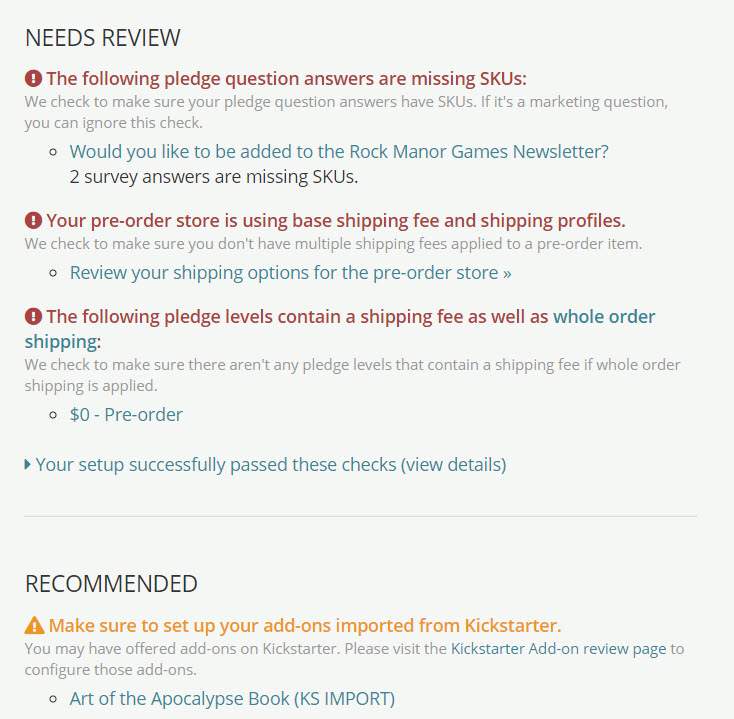
Much like Kickstarter, Backerkit requires you to submit your pledge manager (not your preorder store) for review. Backerkit automatically detects issues with your setup so you can fix them before it’s reviewed by them manually. Additionally, once you’re approved you can do a “smoke test” with your backers to make sure you catch any outstanding issues.

Once you have an account setup on GameFound, you can pretty easily create a new project yourself right from a dropdown menu. GF also has a pretty nice dashboard that walks you through all the essential steps. The first project I setup took me a bit of time to learn how it all worked. It takes some time to get familiar with how they do things and the terminology they use and how you can restrict products to certain user groups, but it all gets to a lot of the features that I want.

I will say that I absolutely LOVE that Gamefound lets you create “Sets” of products. Whether you’re creating a bundle or making a SKU cheaper for group pledges or something, you can create a bunch of different sets to represent all your different pricing without having to create new convoluted SKUs or duplicate products. It’s not quite as user friendly as CrowdOx but I do find the features in GameFound more and more robust.
Pledge Manager’s setup process is very high touch. If you are used to Excel spreadsheets and don’t like learning/navigating websites and backends, Pledge Manager is for you. Part of me has to admit that the setup is pretty easy because they do it all for you. You fill out a spreadsheet and email it to them and they set everything up for you on their platform.

You really need to get that spreadsheet right though because what irks me with Pledge Manager is once they set it up, they don’t really trust you to make changes. All you can really do is change up your product titles and descriptions. You can’t even upload and change product images. I also think it lacks the same kind of currency and analytics features as the other two.
With all that being said though, the PM team can actually do some pretty fancy stuff with your setup. I’ve done different shipping waves, sold extra stock from previous campaigns and of course done multiple language selections for each product all within their system. I just had to set it all up in Excel and email/skype with them back and forth, so the features are there – they’re just not readily available to you from their admin dashboard.
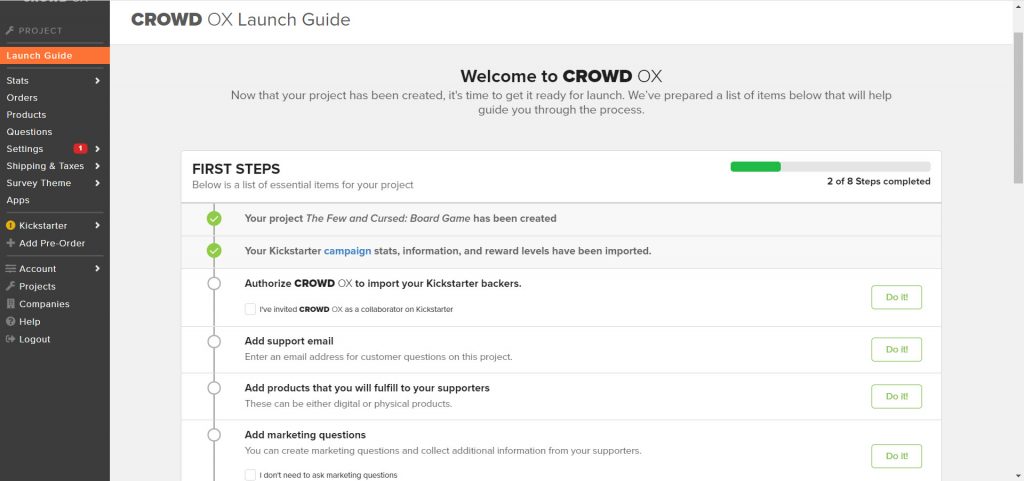
I believe you have to contact Crowd Ox and sign a contract before they add your project into your dashboard. They do a nice job of grabbing your Kickstarter URL and prepopulating things in their dashboard. Once you have access to the admin dashboard, the setup is really slick. As you can see above, they have a really nice setup dashboard that walks you through each step. When you click the “Do It!” button it jumps you right to where you need to go.
Crowd Ox requires that you make setup their account as a contributor via on Kickstarter which allows them to automatically generate your pledge levels and easily import your backers using the Kickstarter API. Some people may not be comfortable with that kind of access, but they do not get access to anything they are not going to get anyway. The API integration does make setup easy though.

Crowd ox’s admin interface is robuts and you are also free to create new products, add-ons, etc and build it all out as you go. Crowd Ox’s admin interface is very straight forward and the most visually appealing. I really have no complaints and think it’s well done. I found it easy to use and feature rich.
Setup / Admin Backend Summary – Winner: Backerkit
I still prefer Crowd Ox’s interface and overall look the best, but if I had to pick between the viable choices, I’d go with Backerkit. Gamefound is constantly improving, but I do think Backerkit is easier to setup and use right now.
Shipping
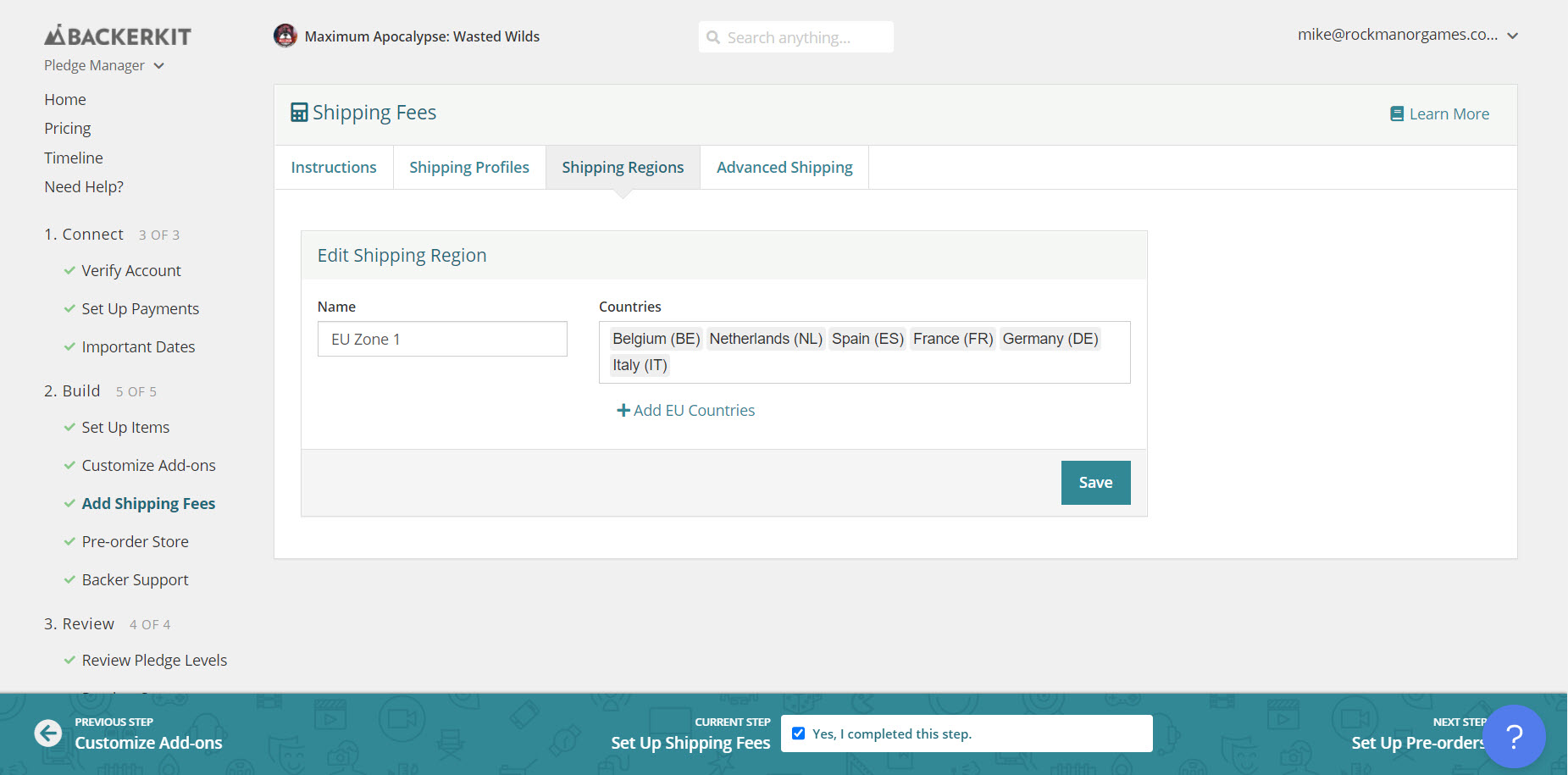
Backerkit offers a whole bunch of shipping options. Like many of the other services, you put each country into a different shipping bucket region (I would have loved to have some preset region to choose from) and then you can create different shipping profiles for different products, pledge levels, retailers etc. In my projects, I always like to charge shipping based on the actual weight of the products. Backerkit has this whole order weight based shipping feature, but it overrides all the other fancy profiles so you have to manually request its activation.
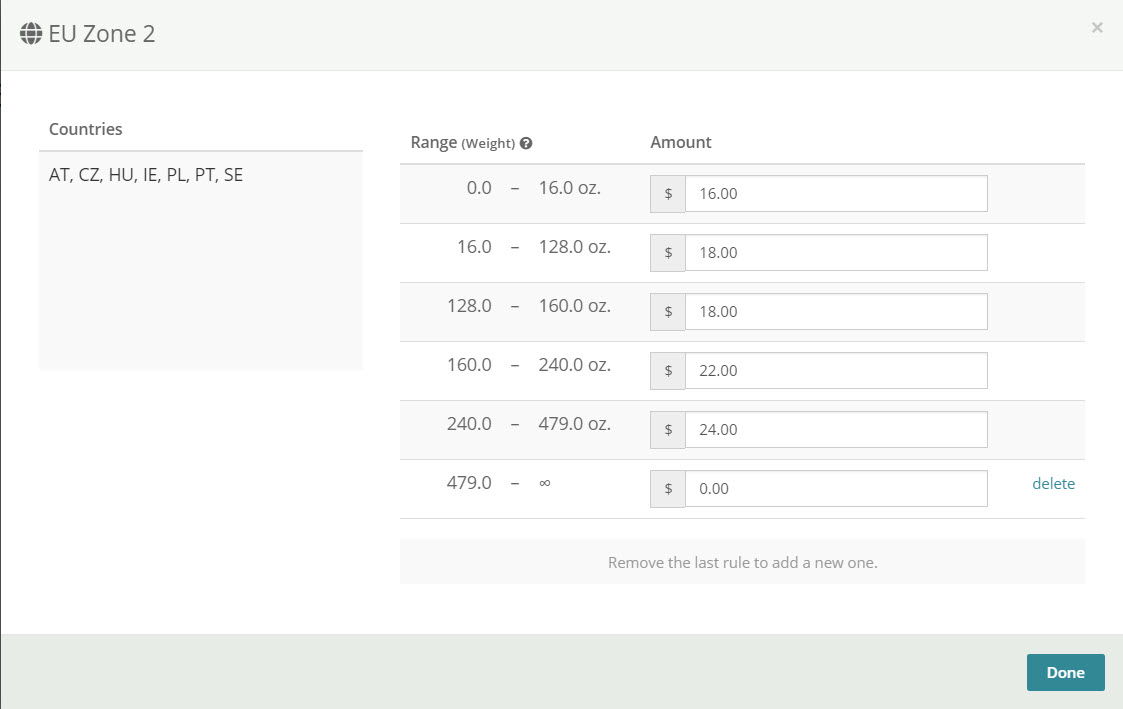
I found Backerkit’s shipping system easy to use, but very repetitive. I had to open and create a table for each zone and while I could copy/duplicate them – I had to convert all my product weights into raw ounces in order to fill it out correctly. It was by far the most time consuming part of setup. I really just want to be able to create a spreadsheet and upload rates by country.

Gamefound’s shipping system is very feature rich and is easily the most complicated as a result. I don’t think the complicated nature of it makes it hard to use, but it adds time to the process and you have to click through a lot of menus. Now the pros for their setup is that you can create completely independent shipping models, shipping stages, shipping rules and more. It can pretty much do whatever you need, but it offers way more than I’ve ever needed. Like Crowd Ox, you have to manually create shipping zones, add countries/locations (I do like that you can easily separate out Hawaii/Alaska from the USA though!) and then edit each zone and put in the weight ranges and prices. All very time consuming. It’s especially annoying that I can’t save my zones from previous projects and reuse them.

Luckily, after all that work, Gamefound has an amazing and easy to use Shipping Calculator to check all of you work. You type and add as many products/pledges as you want and then click calculate and it spits out the shipping cost for each region. This is a very very easy way to check your KS shipping table graphic against the shipping that you actually put into their system and makes finding any errors very easy.

Now here is where I think Pledge Manager’s down and dirty approach really benefits them. When you’re getting quotes for shipping from different fulfillment services (Funagain Logistics, ShipQuest, Quartermaster) – the will send you a spreadsheet or PDF of their pricing. You probably already have a shipping pricing spreadsheet or table that you worked on before you launched your Kickstarter. Pledge Manager is the only platform that I’ve seen that lets you easily upload a CSV spreadsheet to take care of all of your shipping. Format your shipping table then 1 click to upload and you’re done. Working in a spreadsheet for shipping is just easier and faster since you don’t have to click through all the layers of things.

Pledge Manager also offers the best when it comes to double checking shipping. You can click the test weight button and put in the region/weight you want to check and it quickly jumps /highlights the shipping table OR you can login and view the checkout process as a customer.

Shipping is where the Do it Yourself method can be really tedious. Crowd Ox’s system is easy to use: you create a shipping Zone and go through and select each country it applies to manually. Then you have to put in weight ranges and prices for each weight. Building these charts is time consuming. Crowd Ox also doesn’t have a quick and easy shipping calculator testing method. You can login and simulate being a customer though so that’s how I always double-checked my shipping costs.
I would like to note that I utilized different waves of shipping on one of my Crowd Ox projects. It worked well and they do a nice job locking only specific products via their export system. Like all the platforms, Crowd Ox has easily integrated with my fulfillment company’s software/system. Most use Shipstation, but Crowd Ox does have other integrations and apps you can install.
Shipping Summary – Winner: Pledge Manager!
I’ve used both Pledge Manager and Crowd Ox to do more complicated projects where I’ve sold excess stock with inventory tracking and had multiple shipping waves. Crowd Ox was not able to ‘hide’ certain add-ons from people by region (because our inventory differed from each regional hub) which did let some human error trickle into one of my projects and as Mathe noted, Pledge Manager can do this. All in all though, they both were able to do what I needed them to do. While I haven’t gotten into this same level of complexity with any of my recent projects on Gamefound or Backerkit, I’m sure their shipping systems can handle it. It really comes down to the setup time and ease of adjusting my shipping table and Pledge Manager is the clear winner in that department, plus you’re not sacrificing any real shipping features.
Preorders / Late Pledges
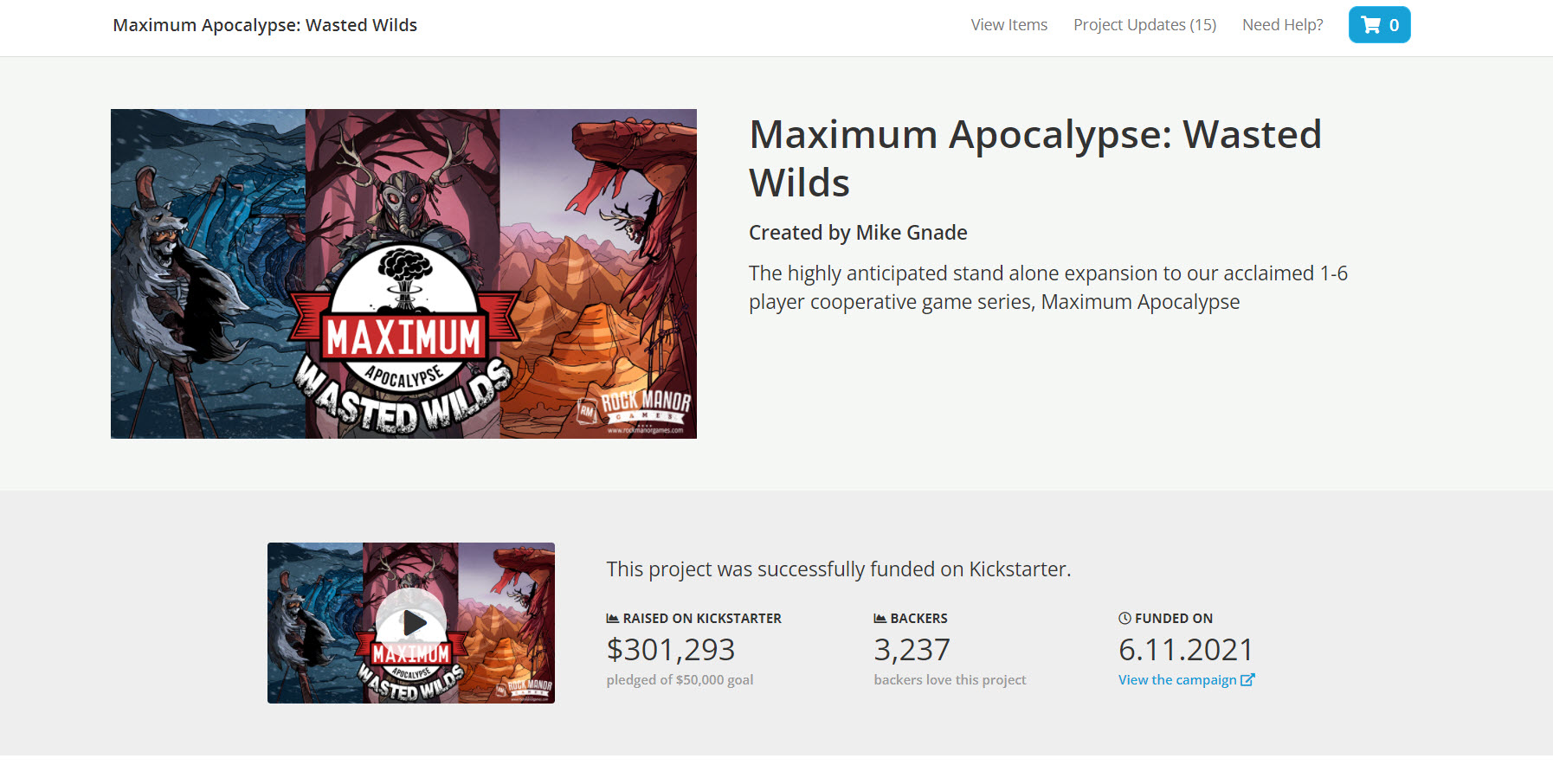
Backerkit allows you to get a preorder page setup so that you can capture people as soon as your campaign ends.
It’s very important to note that Backerkit’s money collection is entirely different than any of the other platforms and more restrictive. When someone late pledges on Backerkit, you do not get the money immediately. Backerkit’s payment system mimics Kickstarter. It’s open and then you must close it and then charge cards. Just like Kickstarter, you will have people’s cards bounce and fail. It only offers Stripe payment processing and there’s no paypal. Depending on how long your Backerkit stays open, you can get your money later and later. I guess there’s a slight advantage in that you do get one big deposit that contains all your late pledges and shipping, but I’m not a big fan of charging people’s cards later and dealing with the additional headaches of failed shipping payments etc.

If you’re willing to put in the work before/during your Kickstarter, you can add your late pledge button on Kickstarter as soon as it closes. This is what I did for my Lawyer Up campaign and you will see pledges start rolling in immediately and avoid the KS messages about “just missing it.” I love that Gamefound can start taking orders and collecting money immediately.

Pledge Manager’s preorder system mimics the look of your Kickstarter page. They have to set it up for you so they’ll grab all the info from your campaign page and you’ll need to email them to change things. They may have changed this now, but I was never able to get my preorder up immediately after my campaign and always had to wait at least 2 weeks for the campaign to wrap up and to get the backer export. I do think getting up a late pledge button as soon as your campaign closes is an important thing so I hope this is something PM has or will address.

Crowd Ox’s preorder page does a great job of summarizing your Kickstarter and linking back to it. It’s also the most aesthetically pleasing of the preorder pages. It actually sits between the other platforms as far as their preorder strategy goes. You can have the preorder / late pledge option available as soon as your Kickstarter ends like Gamefound, but at first people just select the pledge they’re interested in and it takes their email address and adds them to your list. Then when you actually launch your surveys, everyone who signed up as a late pledge is included in those surveys and can login to actually pay and checkout.
Preorder Summary – Winner: Gamefound / Crowd Ox
I don’t think there is a clear winner here, but would say Backerkit’s payment system is less than ideal. It doesn’t support Paypal and you can run into a bunch of card issues when you go to charge them the longer you leave your pledge manager window open. Backerkit’s late pledge and preorder pages look great. It’s UI and design in general is phenomenal, but I’ve seen people get angry about getting charged $ for a pledge without warning so I think it just leads to problems. Gamefound captures the purchase immediately which may give it a slight edge, but Crowd Ox’s UI is prettier and slicker. If Pledge Manager could get their preorder going as soon as your project ends, I’d really say it’s a tie. They can all do preorders and there’s no reason a Kickstarter creator shouldn’t offer preorders or late pledges after their campaign has closed.
User Interface – Winner: Crowd Ox or Backerkit
This is a somewhat subjective category, but I find Crowd Ox’s design and interface to be the most intuitive and aesthetically pleasing. A close second is Backerkit which is well designed and has a great interface throughout. Everyone can pretty much judge this for themselves so I’m not going to dwell on it.
User Checkout Experience
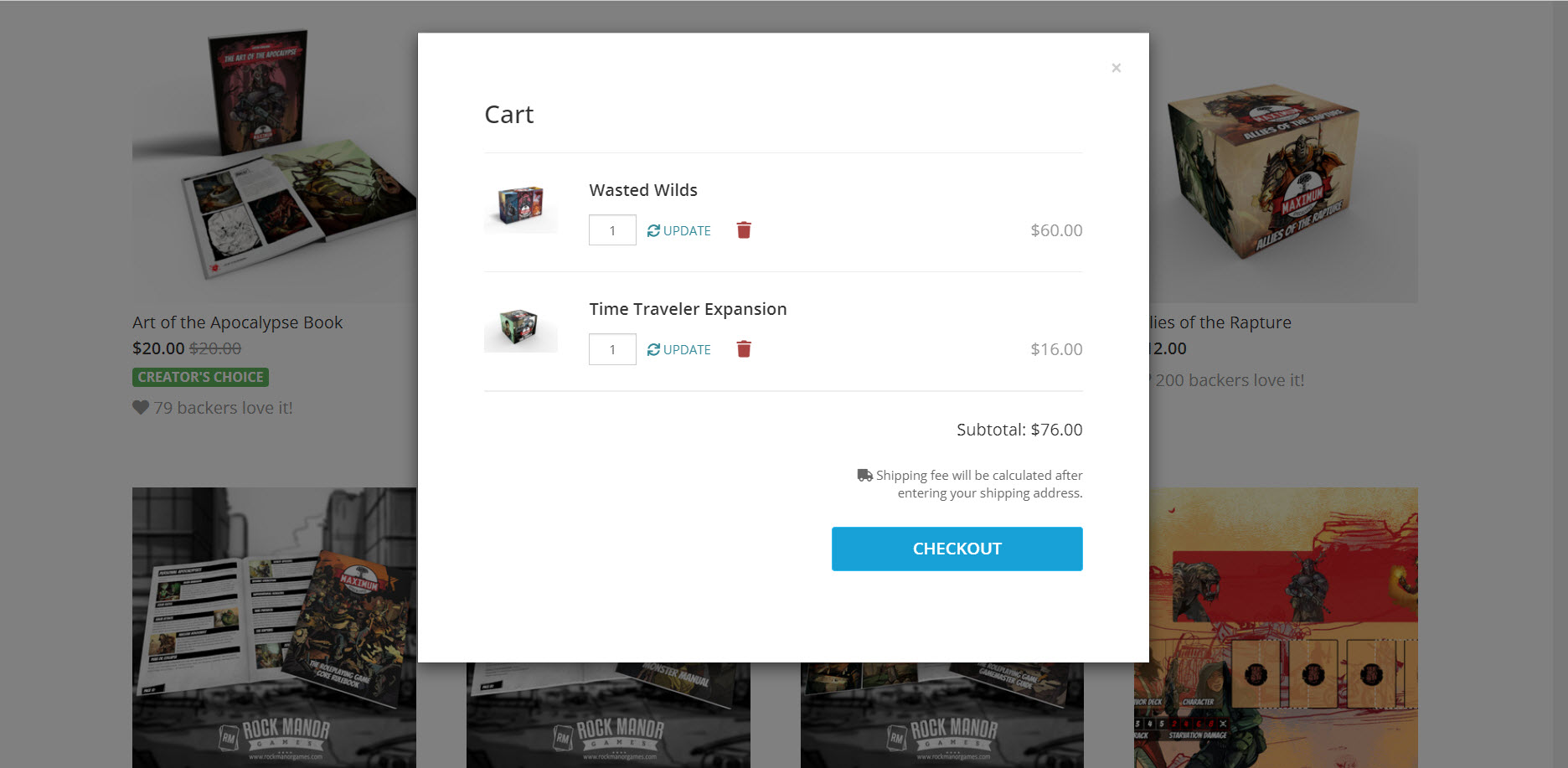



User Checkout Summary- Winner: TIE
I can have backed almost 100 KS projects and I can tell you that as a User I do not care what pledge manager you use. In my experience, they all send me an email with a link I click, then I pick my rewards, put in my address (or my address is already saved on the site), I pay for shipping and then I get a confirmation email. As a customer, they all let you edit your pledge (while you can) and change your address. I’ve never missed completing my survey on any of the 4 platforms shown above. In fact the only quibble I have with any of them is that Backerkit can be a little overzealous with their reminder emails (but that’s a plus on the creator side as you can target those that have not logged in and completed them yet). I’ve never heard from any backers complaining about using one above the other or any of my surveys being difficult to complete.
When I posted to a Facebook group that I was working on this post, I had someone ask, “Is a specific pledge manager more popular among backers than others?” The answer is no… maybe there are a few that really care… but that percentage is so small that it isn’t significant. We’re talking less than 1% here. Another person asked, “How much extra sales the PMs is raising for you?” Zero. As I mentioned earlier, I bring extra sales to the PM because of my own marketing and product. If a PM has featured me in a free newsletter, I haven’t noticed any spikes in funding. I’ve found that you can expect to raise about 20% more from your funding goal in the Pledge Manager from late pledges and pledge upgrades. The bigger indicator is the differences between the projects rather than the Pledge Manager used.
Order Lookup & Maintenance
I know I’ve already covered some of the backend features of each of these platforms when I talked about setting them up, but that’s really just a small part of what you will be doing with these pledge managers. As you work on fulfilling your project, you will deal with cancellations, looking up orders, order changes, and other customer support issues.
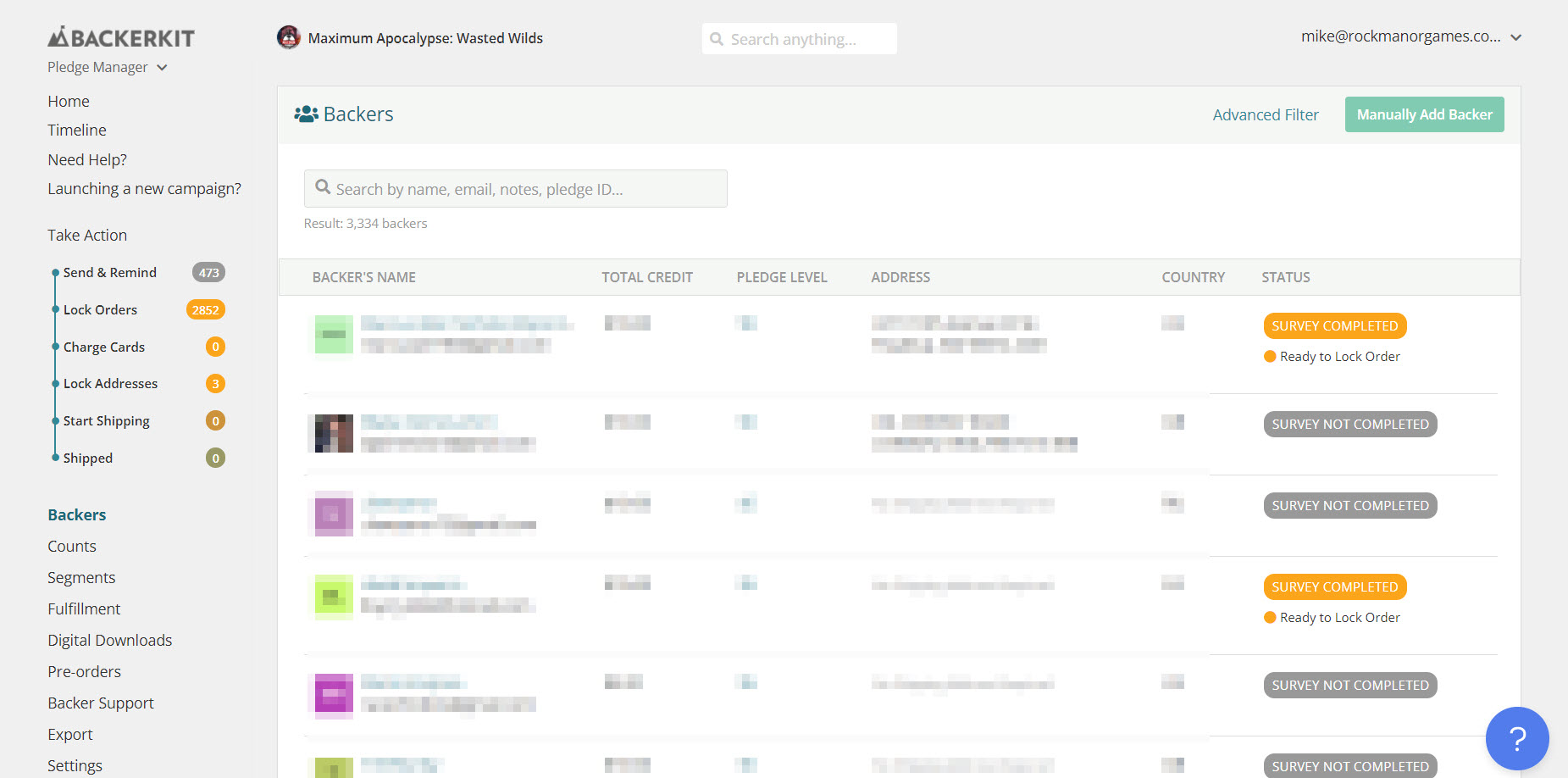
Backerkit’s “Search Anything” at the top of their backend is stellar. You can start typing a backer email address and it brings up their order. If you type the name of a product or a SKU number, you can jump right there and edit it. It makes navigating the admin dashboard super fast and very easy and intuitive. You can also see that their backend does a good job displaying who still needs to complete their survey.
You can easily modify an order, process a refund etc. from the backend. Backerkit also has a great “impersonate” backer feature that helps troubleshoot confused backers and see exactly what they’re seeing. I like how Backerkit breaks out fulfillment into its own category for uploading tracking numbers and other shipping info.
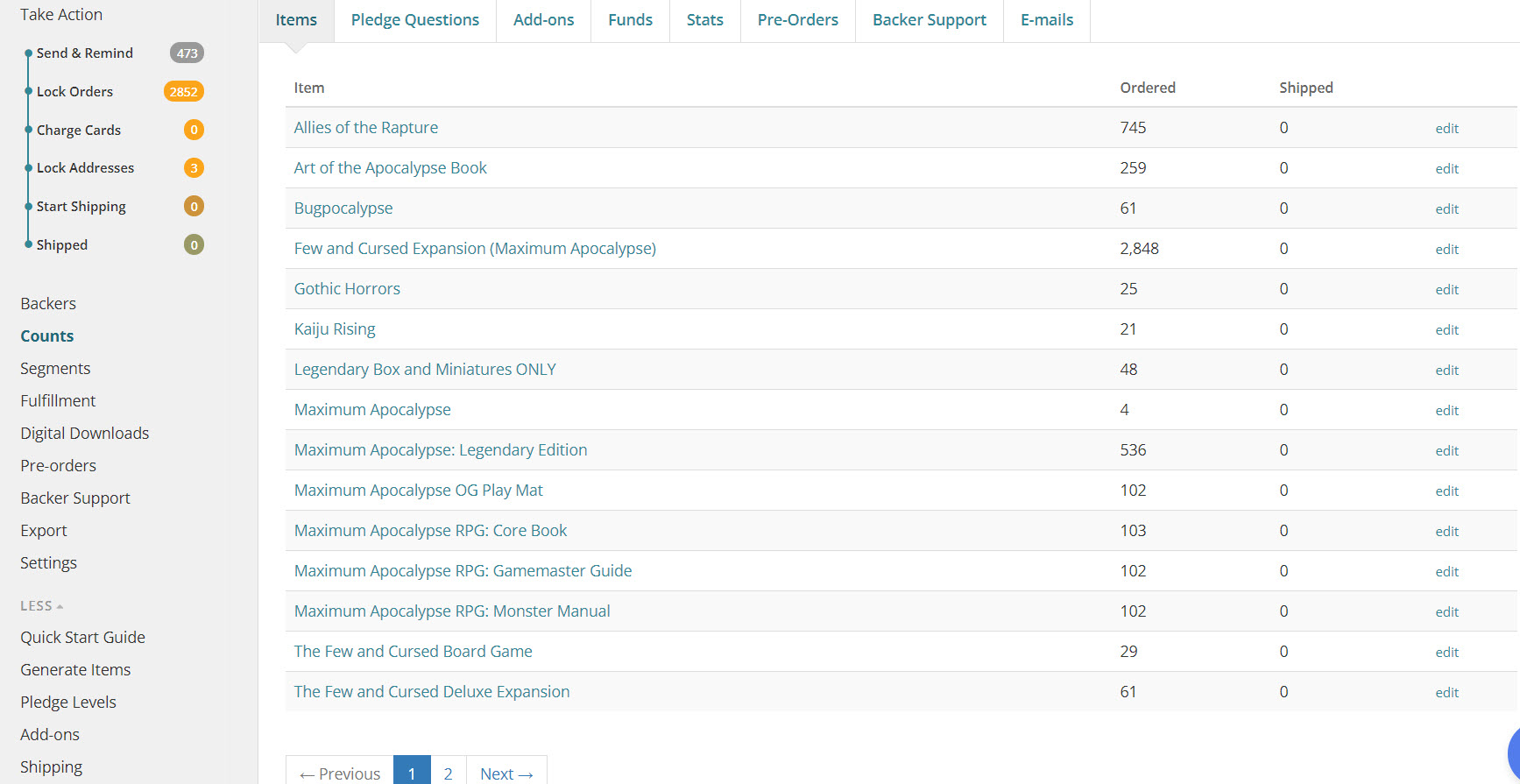

Gamefound has an easy to use filtered search to lookup backer’s orders, statuses, etc. I’ve had no issue looking up orders, inviting/importing users, cancelling orders, or processing refunds. When you process a refund, if it is a really old order you may have to send the actual refund outside of GF’s system. I think it has more to do with Stripe/Paypal’s api than their platform though. I like that you can include fees (KS + CC fees) with a cancelled order so the customer has a record of the breakdown.
It’s worth noting that Gamefound does not allow you to quickly impersonate a backer right from the order. I’ve found this helpful on the other platforms, because you can click through the survey or impersonate them and see what they’re stuck on. You can easily do everything from the backend though (change pledges, add items, change quantities).
Gamefound doesn’t have any product summaries for SKU counts and requires you to export everything into a CSV or spreadsheet. Not a huge issue, but an extra step and a pain if you’re not good at Excel.

Pledge Manager’s quick search is pretty smart contextually. You can paste a name, email, etc and it will return any result that might be a match. I also love that they have the tabs at the top to quickly jump to incomplete pledges, etc and that the list itself is color coded. It all comes together to give you a lot of info. You can jump to any order by clicking the Tools icon or impersonate a backer from the dropdown there.
Like the other platforms, you can easily modify an order, process a refund etc. from the “review order” backend. After fulfillment, I also like how each tracking number is included on the order pages with a link to the tracking service (DHL, Fedex etc website.)

Pledge Manager is one of the only platforms where I could easily click and get SKU counts by country. I can’t tell you how any times I need to double-check this info leading up to freight shipping / fulfillment. It’s nice to just have it ready to go, rather than having to filter countries or download a spreadsheet.

Crowd Ox has an easy to use order search that lets you find stuff quickly. It also has several filters that you can apply. It has a few more features when it comes to views, sorting, etc. than the other platforms. You can cancel an order with the click of the bottom and I really like how they display all the emails the customer has been sent (invite, confirmation, receipt, etc). You can easily view them or resend these emails. Backers will sometimes ask “did I fill out the PM correctly?” and it’s nice to be able to send their confirmation to them again.
Crowd Ox gives you all the tools to change an order. You can add/remove items, change pledges etc all from their backend and there’s even a button that logs you in as the backer and impersonate them. I find this really useful to see where they are stuck or to login as them myself to back them up and fix things.

Another thing you’re going to need to do other than check up on orders, is verify quantities of each of your products / skus for manufacturing and then how you’re going to split them up by shipping lane. Crowdox has a nice way to jump to the overall stats, but you have to filter by country to really break it down for your shipping lanes.
Order Lookup & Maintenance – Winner: Backerkit / Pledge Manager
This is probably a bit subjective since the feature sets are all very close, but when it comes down to it I think I can lookup/change an order in Backerkit or Pledge Manager. Pledge Manager is the only one that I’ve seen breaks down SKU by country code online (without downloading an excel sheet) so that is very useful and keeps it tied with Backerkit which has a more robust search and a cleaner backend UI.
Fulfillment / Exporting
I will update this section when I have had more time with Backerkit’s exporting function.
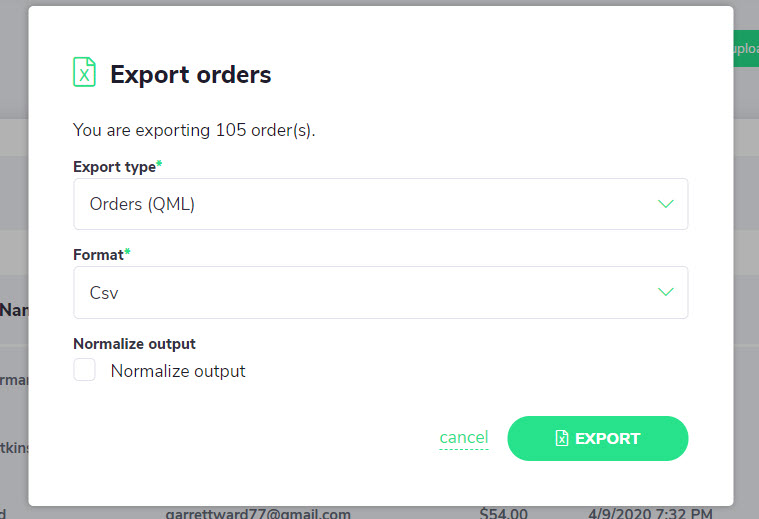
I should start by saying that I have not finished fulfilling any of my current Gamefound projects yet, but they do allow easy CSV and Excel spreadsheet order exports from their filtered order search. They do not have the same number of featured apps as Crowd Ox, but they do feature many of the major board game fulfillment providers like Quartermaster Logistics.
I’ll update this section more as I finish up fulfilling these projects, but they appear to have all the features I need here. Their project dashboard has a nice snapshot of % shipped vs pledged so I’m very confident they will allow me to upload tracking information and/or integrate with Shipstation.
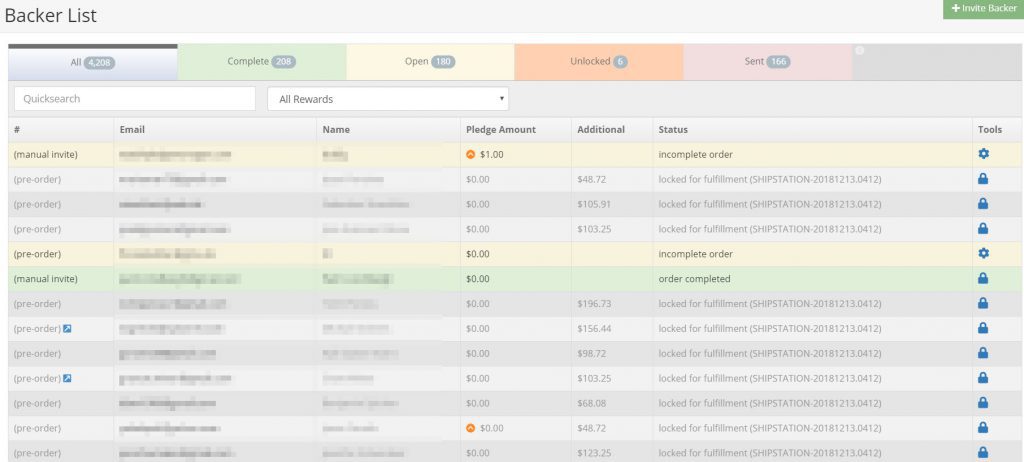
This is actually probably the single biggest issue for me when it comes to Pledge Manager, but they only really have 1 backer list export and it is pretty useless. It just downloads a spreadsheet of the above backer search with their addresses etc added. You have to contact their customer service to get a true order report with the breakdown of SKUs that you would need for your fulfillment company. As I mention below, the customer service there is excellent, but it annoys me that the data is in there and I can’t get it without asking.
With all that being said, they integrate with with all the major fulfillment companies and the Shipstation software that everyone uses. If you take the time to get the integration working, your shipping hub can just batch and download all the labels etc. from their system. Best of all, the tracking numbers etc will post back to Pledge Manager.

Basically you use Crowd Ox’s robust order search and filtering system to create exports. Filter the search and then just click the export button and the fulfillment service provider you’re using. If they’re not already in the list you can install nearly every provider from their app list. This makes sure your exports are formatted exactly the way your shipping partner needs them which is nice.
A really nice feature about Crowd Ox’s segmented search is that it allows you to export a shipping report for your European Depot and lock the orders in that export or even the individual products. For my last Crowd Ox project, I sold a bunch of stock I had leftover in the EU and AU and was able to export and lock those specific products in people’s orders so that they could still modify/change the main pledge from that Kickstarter.
Fulfillment / Exporting – Winner: Crowd Ox!
I haven’t had a project where I can export the data and just send it off. I feel that there is always some excel and spreadsheet work to be done so it’s really about the app integrations and different formats that you can export into. I have been pleased with the new options Gamefound has added and have honestly never had an issue with any of the pledge managers once I get the Excel spreadsheet. I acknowledge that Crowdox has a lot of app integration options so I’ll toss it to them in the meantime.
Customer Support
Martyn Poole (formerly Gamefound now Backerkit) is involved in the board gaming community and is one of the reasons that I finally gave backerkit a try. He answered all of my presales questions. During setup, I ran into a couple of technical problems and the customer service team always set up calls, made recommendations or answered my questions in a timely fashion.
My only complaint about the Backerkit team is that their sales team would make frequent unsolicited calls/emails to me every time that I launched a project. It was quite annoying, but again sort of goes back to the cost of Backerkit and why they’re so expensive.
My contact at Gamefound was the illustrious Martyn Poole but has now switched to Ryan Schoon. Both frequent many of the board game groups on Facebook and are quite personable. I’ve liked that I can send them a quick message Facebook to share screens and get my questions answered.

Gamefound could use a knowledgebase or better documentation though, but again I think that pain point is alleviated by the always available team they have there to help you.
I have never had an issue with Pledge Manager support though I did find the best way to communicate with them was using Skype. Adam Clark and his team are all very nice and regularly attend conventions, so you even have the chance to meet them in person.

Pledge Manager has a fantastic “Backer Boiler Plate” help text that you can grab an email to people that message you. I’ve copied this to my clipboard way too many times to count – it’s super helpful.
I’ve personally met Chandler Copenhaver ([email protected]) on several occasions at conventions both big and small. He even playtested the Few and Cursed at Metatopia a few years back. All my interactions with him have been positive. He’s more on the sales/account rep side but he always got me in touch with the right person or pointed me to the very helpful knowledgebase that Crowd Ox has whenever I got stuck or had a question.

Not only can you pretty much find every answer you’ll need in this portal, but they even contextually link to some of the more relevant articles or help you may need from their admin backend.
Customer Support Summary – Winner: Depends…
I really would recommend working with any of these people. The only thing I would reiterate is that all things held equal, Pledge Manager is a lot higher touch. You will absolutely be interacting with them (so it’s great that they are helpful) on every project. For my last Gamefound project, all I had to do was send a message to Martyn to do the final review and publish it on the day my Kickstarter ended. When it comes to customer support, I don’t think you can go wrong with any of them.
It really depends on how much hand holding you want or need. Are you brand new to pledge managers or do you get frustrated learning websites? Pledge Manager might be best for you because you’ll spend more time reviewing their setup than learning how to use a website. Are you a control freak like me? Crowd Ox, Backerkit and Gamefound give you more control. If you’re less tech savvy, Backerkit’s interface and livechat features could get you over the hump where Gamefound may overly frustrate you without calling on customer support.
Pricing
I have updated this pricing calculator with the publicly posted pricing for the year 2021:
Pricing Summary – Winner: Gamefound!
While Gamefound remains free, it is always going to come up as the cheapest option and is really hard not to recommend. People sometimes question Gamefound’s integrity around privacy because they are free. They might even quote, “‘if you’re not paying for the product, you are the product” but Gamefound is fully GDPR compliant just like every other pledge manager. I can tell you that I’ve had no privacy/data issues with ANY of the platforms that I’ve used. Plug in any of Awaken Realms (the company that created Gamefound) blockbuster Kickstarters into the calculator above and I think it pretty clearly shows you their incentive to build something themselves. I mean if you have even one $2+ million Kickstarter you’re paying a salary to use a pledge manager. I wasn’t a huge fan of how Gamefound markets their crowdfunding projects to gamefound users (and potentially your backers), but its over now and they’ve launched it as their own crowdfunding platform so it’s out there now.
Pricing is a big deal for me so I tend to recommend pledge managers based on the results above. Everyone likes to talk about how much money a PM will make you, but making money isn’t just about sales it is also about controlling expenses. Is BackerKit really going to make you $5k-$10k more than Pledge Manager? How does using their platform drive any more eyeballs to your late pledge than Gamefound? Saving $2k-$3k is a big deal, especially for smaller campaigns. I’ll just reiterate what I said in the beginning. You are driving 99% of people to the pledge manager. It’s your crowd and you shouldn’t pay extra for bells and whistles that you don’t need.
Backerkit Summary:
Bakerkit is the Rolls-Royce of pledge managers. It’s very expensive and has all the bells and whistles. If you’re willing to pay more for a clean user interface, tons of features/integrations, and quick/easy setup are the most important factors for you, it might be right for your project. Keep in mind that you’re paying for the brand and the platform won’t bring you any more late backers than any other choice.
- Pros: Fully featured, Beautiful Interface, Low Touch, Automated/Import Setup, Amazing Backend Search, Easily resend emails, impersonate backers, preorder store
- Cons: Expensive, Setting up Shipping tables is time consuming, requires collaborator invite/integration with Kickstarter, no paypal, backers are not charged instantly when survey is filled out, you have to request whole order weight based shipping
If you’re interested in Backerkit, you can visit https://www.backerkit.com or contact Martyn Poole at [email protected].
Gamefound Summary:
Gamefound is currently my go-to pledge manager. While it took me some time to adjust to it, its feature set is quite robust and it is hard to justify spending hundreds or thousands of dollars more to use the other platforms. It’s hard to argue with free, but I would actually gladly pay Gamefound 1-5% of any additional funds raised on their platform. It’s also nice that Gamefound is focused on Board games. It’s also the only platform with some discovery and some form of storefront to potentially be found by users.
- Pros: Free, Low touch, Create different product bundles without a bunch of new skus, Late Pledge can Launch ASAP and collects money immediately, Different user groups for group pledges, retailers, etc, Actively being developed/improved: New project dashboard is great, designed specifically for board games
- Cons: Bit of a learning curve, Shipping setup is time consuming, Default Currency (with currency conversion) is a bit fiddly/buggy, Have to download spreadsheet for product counts and order details, Can’t impersonate backers
If you’re interested in Gamefound, you can visit https://gamefound.com/ or contact [email protected]
Pledge Manager Summary:
The only bad thing I can really say about Pledge Manager is that I find it very annoying to request database exports. Yes, I realize that you only realistically do this a few times during a project, but it’s just a feature that should be in there. I also think that an easy to use feature that lets you bulk re-invite people that haven’t completed the survey would be nice (you can manually do it one by one). You can see I’m reaching for complaints. Pledge Manager is very strong and run by excellent people. It has all the features that 95% of creators need.
- Pros: Shipping Table upload, Order Quick search w/ tabs, Fair price and great value, Great Customer support, Easy to test by impersonating backers, Efficient
- Cons: Hard to batch email reminders, Preorder waiting period, High Touch, Smaller team, Platform hasn’t evolved/improved much over the years, Have to ask for exports
If you’re interested in Pledge Manager, you can visit their website at https://www.pledgemanager.com/
Crowd Ox Summary (for posterity):
Crowd Ox is a higher end platform with more features and flexibility but you’re going to pay for those luxuries. If you have a complicated project with add-ons, in stock items in different fulfillment zones, multiple shipping waves – then the price may be worth it to you (after negotiating them down). I can tell you that this platform was an absolute steal at $29/month back in 2015 – tremendous value. While I didn’t pay $0.75 per backer for my recent project, I did pay more than $0.25 per backer and find it hard to justify spending more when the other platforms could’ve met my needs and saved me money.
- Pros: Fully featured, Beautiful Interface, Low Touch, Tons of integrations, Online chat, Great Knowledgebase, Individual Product locking for easy multi-wave shipping, Easily resend emails/receipts
- Cons: Expensive (especially for cheaper games with a lot of backers), Setting up Shipping tables is time consuming, requires collaborator invite on Kickstarter
If you’re interested in Crowd Ox, you can visit https://crowdox.com/ or contact Chandler Copenhaver at [email protected]… but be aware this platform is going extinct.
That’s it for me. Hopefully this information can help creators choose the best Pledge Manager for their project. If I messed anything up or if you have any comments, suggestions, or feedback please comment below. I will do my best to keep this post updated with the most relevant information.

Tuson Ong
pledgebox.com has no update fee and even better (and easier) interfaces for creator to setup survey and upsell.